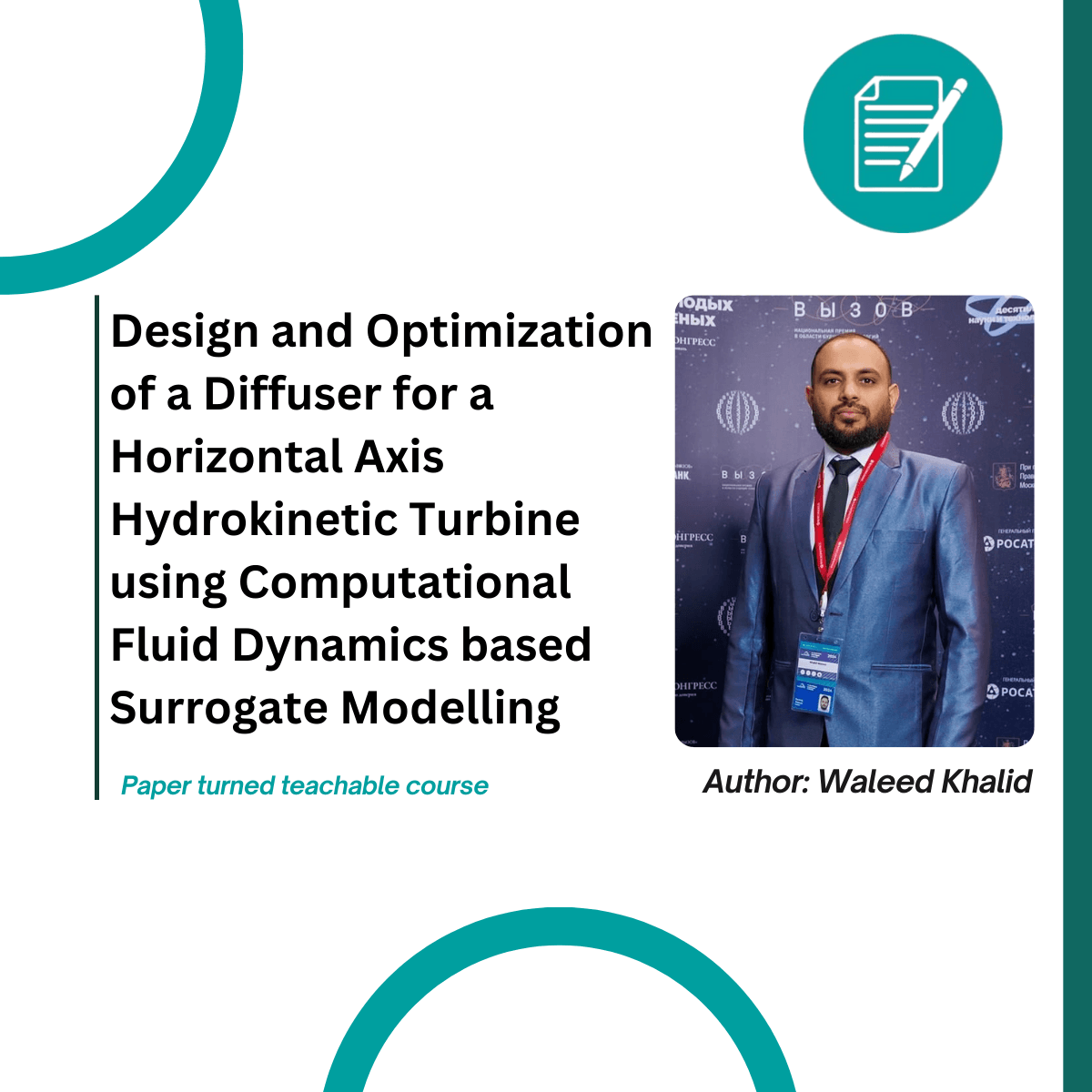Design and Optimization of a Diffuser for a Horizontal Axis Hydrokinetic Turbine using Computational Fluid Dynamics based Surrogate Modelling

About Course
Abstract
Fossil fuels have remained at the backbone of the global energy portfolio. With the growth in the number of factories, population, and urbanization; the burden on fossil fuels has also been increasing. Most importantly, fossil fuels have been causing damage to the global climate since industrialization. The stated issues can only be resolved by shifting to environment friendly alternate energy options. The horizontal axis hydrokinetic turbine is considered as a viable option for renewable energy production. The aim of this project is the design and optimization of a diffuser for horizontal axis hydrokinetic turbine using computational fluid dynamics based surrogate modeling. The two-dimensional flat plate airfoil is used as a benchmark and flow around the airfoil is simulated using Ansys Fluent. Later, computational fluid dynamics analyses are carried out for baseline diffuser generated from the flat plate airfoil. The performance of this diffuser was optimized by achieving an optimum curved profile at the internal surface of the diffuser. The response surface methodology is used as a tool for optimization. A maximum velocity augmentation of 31.70% is achieved with the optimum diffuser.
DOI:
Course Content
Module 1: Introduction to Hydrokinetic Turbines
Module 2: Fundamentals of Fluid Dynamics in Hydrokinetic Turbines
Module 3: Diffuser Design for Hydrokinetic Turbines
Module 4: Computational Fluid Dynamics (CFD) and Surrogate Modeling
Module 5: Optimization of Diffuser Design Using RSM
Module 6: Practical Applications and Future of Hydrokinetic Turbines
Student Ratings & Reviews
